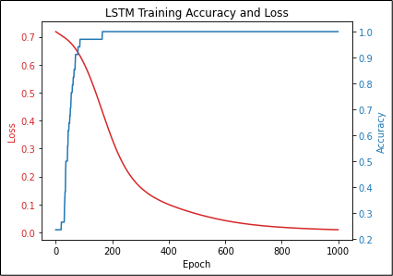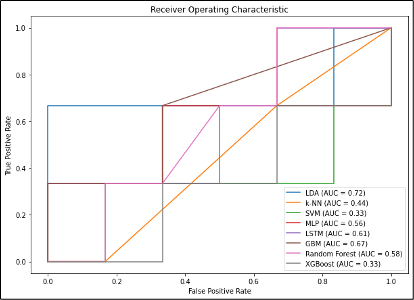Category: Parkinsonism, Others
Objective: To compare the performance of various machine learning techniques, including LDA, k-NN, SVM, MLP, Long Short-Term Memory (LSTM), Gradient Boosting Machines (GBM), Random Forest, and XGBoost, in predicting gait dysfunction (GD) using 7 quantitative measures from 30 Regions of Interest (ROIs) using Diffusion Tensor Imaging (DTI).
Background: Gait dysfunction (GD) is a debilitating symptom of PD that can present with varying degrees of severity. Diffusion tensor imaging (DTI) offers an objective assessment of gait dysfunction and may serve as a non-invasive biomarker for identifying symptoms. Machine learning offers the potential to build predictive models capable of incorporating large quantities of ROIs and clinical information features for prediction of GD.
Method: This study retrospectively investigated 43 PD patients who underwent DTI image pre-processing to generate 7 quantitative measures (FA, MD, ODI, NDI, AK, MK, RK) from 30 ROIs. Hyperparameter fine-tuning was performed using GridSearch and the Age, Sex, UPDRS-III score, and the 30 ROIs were used as features in the models (LDA, k-NN, SVM, MLP, Long Short-Term Memory (LSTM), Gradient Boosting Machines (GBM), Random Forest, and XGBoost, which were trained and tested using an 80/20 split. The LSTM was trained for 1000 epochs using a learning rate of 0.0001.
Results: The MLP with 5 hidden layers and ReLu activation performed the best on the binary classification of GD vs ND (AUC = 0.78), compared to LDA (AUC = 0.72), Random Forest (AUC = 0.69), GBM (AUC= 0.67), LSTM (AUC = 0.50). The LSTM training loss was 0.0117.
Conclusion: This study supports the use of machine learning in predicting gait dysfunction in PD patients using DTI Imaging ROIs. Future investigations using deep learning models and multi-modal patient information may help to validate these results and enhance the predictive accuracy of the models.
To cite this abstract in AMA style:
C. Raimondo, I. Ailes, I. Shelley, K. Shivok, M. Syed, M. Alizadeh. Machine Learning Prediction of Gait Dysfunction from DTI Multi-Spectral Diffusion Weighted Imaging ROIs [abstract]. Mov Disord. 2023; 38 (suppl 1). https://www.mdsabstracts.org/abstract/machine-learning-prediction-of-gait-dysfunction-from-dti-multi-spectral-diffusion-weighted-imaging-rois/. Accessed January 7, 2026.« Back to 2023 International Congress
MDS Abstracts - https://www.mdsabstracts.org/abstract/machine-learning-prediction-of-gait-dysfunction-from-dti-multi-spectral-diffusion-weighted-imaging-rois/



